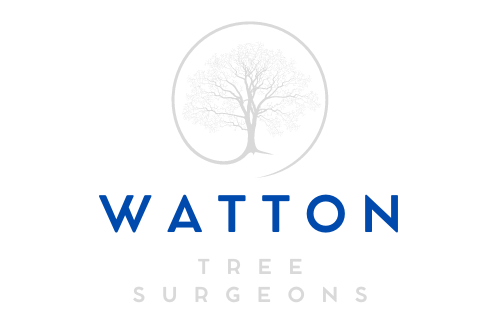The Different Tree Pruning Techniques Explained
Tree pruning is a vital aspect of tree care, enhancing both the health and appearance of trees. With various pruning techniques available, each serving a specific purpose, understanding which method is best suited for your tree can help ensure long-term growth and stability. At Watton Tree Surgeons, we provide professional tree surgery services across Watton, Norfolk, offering expert guidance on the best pruning techniques to maintain healthy and beautiful landscapes. Here, we explain the main tree pruning techniques, how they benefit trees, and when each is most appropriate.
1. Crown Thinning
Crown thinning involves selectively removing branches from within the tree’s canopy, reducing density without altering the overall shape. This technique aims to improve light penetration and air circulation through the tree, minimising the risk of disease and promoting healthier growth.
- Best For: Mature trees with dense canopies, particularly those that are susceptible to wind damage.
- Key Benefits: Crown thinning reduces the tree’s wind resistance, making it less likely to suffer storm damage. It also increases sunlight exposure, which benefits nearby plants and helps the tree resist diseases caused by excessive moisture.
By strategically removing inner branches, crown thinning maintains the tree’s natural shape while creating a healthier environment for growth.
2. Crown Lifting
Crown lifting, also known as crown raising, involves the removal of lower branches to increase the clearance between the ground and the canopy. This technique is particularly useful for trees located near walkways, roads, and driveways, where low-hanging branches could obstruct views or impede access.
- Best For: Trees in public spaces, gardens, or near structures that require clearance beneath the canopy.
- Key Benefits: Crown lifting improves accessibility and visibility, making it ideal for enhancing the aesthetics and safety of both public and private spaces. Additionally, it allows more light to reach the area beneath the tree, which can be beneficial for underplanting.
By raising the canopy, crown lifting creates a more open space around the tree, enhancing both functionality and appearance.
3. Crown Reduction
Crown reduction is a more intensive pruning method that reduces the overall height and spread of the tree. This technique involves carefully trimming back the outer branches to decrease the tree’s size without compromising its natural form.
- Best For: Trees that have grown too large for their surroundings or are in proximity to buildings, power lines, or other structures.
- Key Benefits: Crown reduction helps maintain the tree’s shape and structure while ensuring it remains safely within its designated space. This technique is also effective for trees that have suffered damage from storms, as it balances the crown and reduces strain on weakened branches.
Crown reduction allows trees to coexist in confined areas, preserving their aesthetic value while ensuring safety and manageability.
4. Pollarding
Pollarding is a technique that involves cutting back all of a tree’s branches to a specific point on the main trunk or branches. This process encourages the growth of a dense cluster of new shoots, which are then cut back periodically to maintain the desired shape and size.
- Best For: Trees that require strict size control, such as those in urban or garden settings, and species that respond well to regular cutting, such as willows and limes.
- Key Benefits: Pollarding is an effective way to control the size of a tree, making it ideal for areas with limited space. It also promotes dense foliage, providing a structured and uniform appearance.
Pollarding is a long-term commitment, as it requires ongoing maintenance to preserve the shape, but it offers a unique, manageable solution for trees in restricted spaces.
5. Formative Pruning
Formative pruning is used on young trees to establish a strong and balanced structure, which will support healthy growth as the tree matures. This technique removes any weak, competing, or poorly positioned branches, encouraging a well-defined framework.
- Best For: Young trees in their early years of growth, particularly those prone to structural issues.
- Key Benefits: By guiding the tree’s shape from a young age, formative pruning reduces the need for corrective pruning in the future. This technique also helps prevent common structural problems, ensuring the tree grows strong and stable.
Formative pruning lays the groundwork for a healthy tree with a resilient structure, minimising future maintenance and improving the tree’s longevity.
6. Deadwooding
Deadwooding focuses specifically on the removal of dead, diseased, or decaying branches. This technique improves safety by eliminating branches that are at risk of falling and reduces the likelihood of disease spreading to other parts of the tree.
- Best For: All trees, especially those in areas where safety is a priority, such as parks, gardens, and pedestrian pathways.
- Key Benefits: Removing deadwood reduces the risk of damage from falling branches and helps prevent disease by removing the affected parts of the tree. It also improves the tree’s overall appearance, maintaining a clean and healthy canopy.
Deadwooding is an essential part of regular tree maintenance, keeping trees safe and promoting their health.
Conclusion
Understanding the different tree pruning techniques and their specific benefits is essential for maintaining the health, appearance, and safety of trees. From improving airflow with crown thinning to maintaining a tree’s structure through formative pruning, each technique serves a unique purpose in ensuring trees thrive within their environment. At Watton Tree Surgeons, we specialise in professional tree pruning and surgery services in Watton, Norfolk, offering tailored solutions to meet the specific needs of your trees.
If you’re unsure which pruning technique is best for your trees, or if you require expert tree care, contact us today. Our experienced team is ready to assess your landscape and provide high-quality pruning services that enhance the beauty and longevity of your trees. Let us help you keep your trees healthy, safe, and well-maintained with professional care designed to suit your property.
Call us on: 01953 667 637
Click here to find out more about Watton Tree Surgeons
Click here to complete our contact form and see how we can help with your trees needs.

